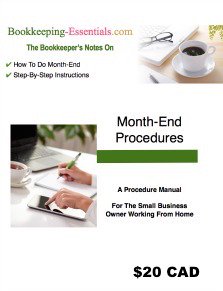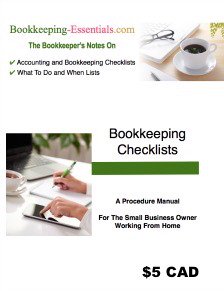Payroll Tax Deduction Rates
in the U.S. and Canada
by L. Kenway BComm CPB Retired
Payroll tax deductions are mandatory for small business owners in the U.S. and Canada.
In this chat, I'll answer these two questions:
- What is the employer's and employee's Social Security tax rate for 2024?
- What are the CPP and EI rates for 2024?
Enjoy a cup of tea while you browse through these rates. I've put together a chart to show you the comparable payroll tax components between the U.S. and Canada.

GOOD TO KNOW
2023 W2 Deadline - Friday, January 31, 2024
2023 T4 Deadline - Friday, February 29, 2024
Canada |
U.S. | |
Payroll Tax
|
Canada Pension Plan (CPP) |
Social Security Tax (SST)* |
Medicare
|
Provincial Health Insurance |
Hospital Insurance (HI)* |
UnEmployment Insurance
|
Employment Insurance (EI) |
Federal Unemployment Tax Act (FUTA) |
|
*SST and HI together are known as FICA |
What is the U.S. employer's and employee's Social Security tax rate for 2024?
A history of FICA & SECA rates from 1937 to present can be found at https://www.ssa.gov/OACT/ProgData/taxRates.html
EE = employee's portion of FICA, ER = employer's portion of FICA
| 2024 FICA | EE Rate | ER Rate | EE+ER Rate | Wage Base Limit | Maximum Tax |
|---|---|---|---|---|---|
| Social Security | 6.2% | 6.2% | 12.4%* | $168,600 | $10,453.20 EE $10,453.20 ER |
| Medicare | 1.45% | 1.45% | 2.9% | $200,000 | $2,900 EE $2,900 ER |
| Medicare | 2.35% | 1.45% | 3.8% | over $200,000 | no limit |
5 Payroll Tax Mistakes To Avoid
You may want to read the US Small Business Administration article by Barbara Weltman titled 5 Payroll Tax Mistakes to Avoid. It discusses best protection strategies for:
- Misclassifying workers
- Not using an accountable plan for employee reimbursements
- Failing to keep payroll records
- Choosing to pay creditors before the IRS
- Failing to monitor payroll company activities
FICA (Federal Insurance Contributions Act) establishes two taxes on self-employed workers, employers, and employees.
✔ The first employee payroll tax known as the Social Security tax is for Old Age, Survivors and Disability Insurance (OASDI).
✔ The second employee payroll tax known as the Medicare tax is for Hospital Insurance (HI).
Business owners (YOU) are responsible for:
- Withholding the employee's social security tax from an employee's pay check;
- Calculating the employer's social security tax;
- Remitting the mandatory payroll tax deposit.
- Submitting your quarterly employer return IRS Form 941.
- Submitting IRS Form 4070 which is your monthly reporting of tips.
What are the CPP (Canada Pension Plan) and EI (Employment Insurance) rates for 2024?
2024 Rates to be released in November 2023. The contribution rate increased to 5.95 % due CPP Enhancement which began implementation on January 1, 2019.
| CPP Rates | 2024 |
|---|---|
| Employee Contribution Rate | 5.95% |
| Employer Contribution Rate | 5.95% |
| Basic Exemption | $3,500 |
| Maximum Pensionable Earnings | $68,500 |
| Maximum Contribution | $3,867.50 |
| Maximum Monthly Contribution | $322.29 |
| EI Rates | 2024 |
|---|---|
| Employee Contribution Rate | 1.66% |
| Employer Contribution Rate | 2.32% |
| Maximum Insurable Earnings | $63,200 |
| Maximum Contribution | $1,049.12 |
CRA (Canada Revenue Agency) and Social Development Canada share administration responsibilities of payroll taxes on self-employed individuals, employers, and employees.
✔ Canada Pension Plan (CPP) contributions are shared by employers and
employees. Self-employed individuals pay both the employee and employer
portions.
✔ Employment Insurance (EI) premiums are shared by
employers and employees and set by The Canada Employment Insurance Finance Board (CEIFB). Self-employed individuals do not
pay EI premiums unless they have opted into the volunteer EI program.
✔ Medical premiums are administered provincially.
5 Payroll Mistakes to Avoid
- Arbitrarily deducting money
- Not deducting CPP or EI
- Not recording taxable benefits
- Treating employees like contractors
- Not remitting on time
Business owners (YOU) are responsible for:
- Opening a payroll account with CRA;
- Obtaining information from employees through the TD1 Form;
- Withholding the employee's federal CPP contributions, EI premiums and income tax withholdings from an employee's pay cheque;
- Withholding provincial medical premiums if you are based in BC, Alberta or Ontario;
- Calculating the employer's share of payroll taxes;
- Remitting the mandatory source deductions via PD7A Form each reporting period (assigned when you open your account with CRA);
- Paying provincially administered workers compensation premiums;
- Issuing T4 and T4A slips annually; and
- Submitting your annual information returns to CRA for T4 and T4A slips issued.

It's been great chatting with you .
Your tutor Lake
Enjoy A Tea Break With
Me Today. Let's Chat!
Use the search feature to quickly find the
information you're looking for.
Join Me On Facebook
Help support this site by "liking" me! Here's where I post current information.
Listed Under Websites NOT Local Business.
This website is NOT associated with the business operating in Bonnyville AB.



